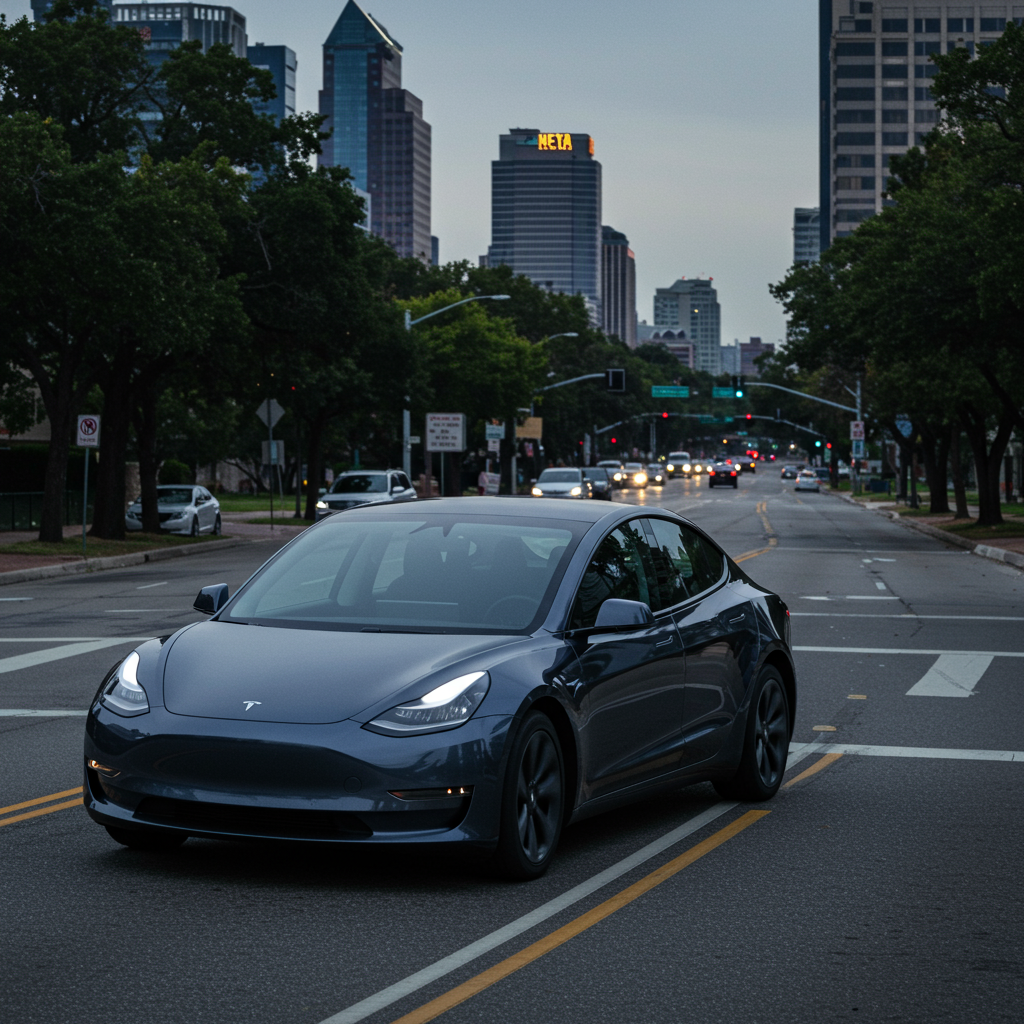US Regulators Probe Tesla Robotaxis Amid Erratic Driving Claims
The U.S. National Highway Traffic Safety Administration (NHTSA) has initiated contact with Tesla following the emergence of social media footage that appears to depict instances of erratic driving by the company’s newly launched robotaxi service during its initial pilot program in Austin, Texas.
The debut weekend for Tesla’s long-anticipated driverless cars, which CEO Elon Musk views as fundamental to the company’s future, involved invited analysts, influencers, and shareholders participating in paid rides on public roads. While Musk celebrated the launch as the “culmination of a decade of hard work,” videos quickly circulated online raising questions about the vehicles’ real-world performance.
Reports of Unpredictable Behavior
Despite operating under constrained conditions – a small fleet (reportedly around 12-24 vehicles), limited to daylight and fair weather, avoiding complex intersections, and with a human safety operator present in the passenger seat – the autonomous vehicles allegedly exhibited concerning behavior.
According to social media posts and reports from tech outlets, incidents included:
Abrupt braking, including one stop near a parked police car.
Apparent speeding.
Swerving into incorrect lanes.
At least one widely shared video purportedly showing a robotaxi driving the wrong way down a one-way street.
These alleged incidents, occurring swiftly after the low-key launch, have reignited public and regulatory scrutiny on autonomous vehicle safety.
NHTSA Takes Action
Responding to the footage, NHTSA confirmed it is “aware of the referenced incidents” and is “in contact with the manufacturer to gather additional information.” The agency emphasized that while it does not pre-approve new vehicle technologies, it rigorously investigates incidents involving potential safety defects to protect public safety. NHTSA is also reportedly reviewing information from Tesla regarding the safety of its self-driving taxis specifically in adverse weather conditions, even though the current pilot avoids such scenarios.
Tesla’s Distinct Approach in a Crowded Field
Tesla’s entry into the robotaxi market places it in direct competition with established players. Companies like Waymo (Alphabet) and Zoox (Amazon) already operate self-driving taxi services in major US cities, including Austin, San Francisco, and Phoenix. Waymo, for instance, has already completed millions of commercial rides. Uber has also launched a robotaxi service in Austin and is expanding internationally through partnerships.
Analysts generally view Tesla’s limited pilot as an ambitious move, but one that starts from a position of playing catch-up compared to rivals with more extensive real-world miles logged and broader operational footprints.
A key differentiator for Tesla is its technological strategy. Unlike most competitors who combine cameras with radar, sensors, and often LiDAR, Tesla relies solely on a camera-based “vision” system. Tesla argues this approach is cheaper and better mimics human perception. However, critics and analysts question whether a camera-only system is sufficient for navigating complex traffic scenarios and challenging environmental conditions safely. Past federal probes and a significant software recall related to Tesla’s Full Self-Driving (FSD) system underscore these ongoing safety discussions.
The Race for Autonomous Dominance
The global market for autonomous ride-hailing is projected to be worth hundreds of billions of dollars in the coming years. However, achieving this potential requires not only technological capability but also building trust among regulators, insurers, and the public. The industry has faced setbacks, including General Motors suspending its Cruise robotaxi program following accidents.
Tesla’s Austin pilot, though limited in scope and facing immediate questions about performance and safety, marks a concrete step towards Elon Musk’s long-held vision for a driverless future. However, the initial reports and subsequent regulatory contact highlight the significant challenges that remain in proving the technology’s safety and reliability at scale. The path forward will require addressing these concerns head-on under intense public and regulatory scrutiny.



